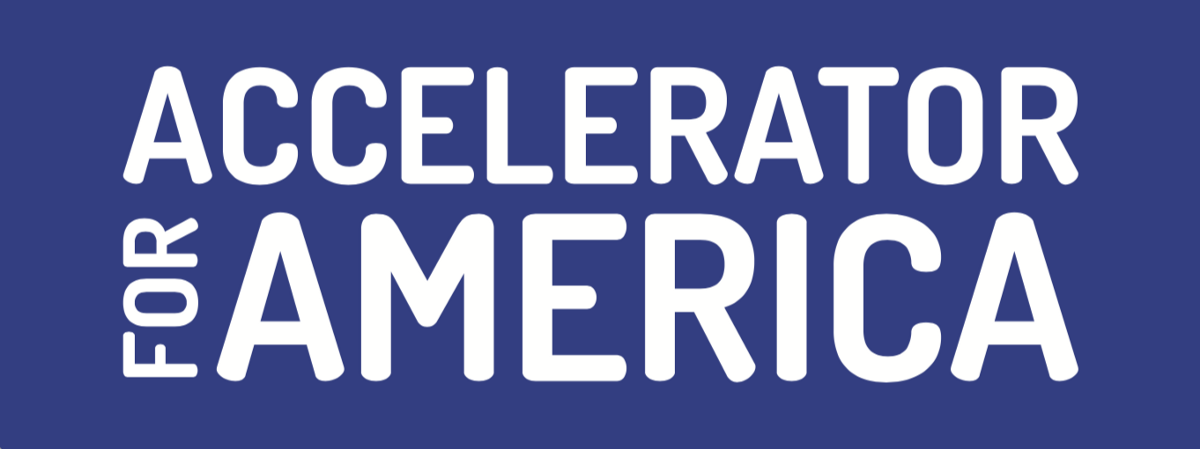MISSION
The future of American infrastructure sits at an exciting and critical moment. After decades of disinvestment, trillions of dollars in funding and programs are providing new opportunities for transformation, innovation, and public-private coordination for cities and states.
To meet the moment, Accelerator for America and Sidewalk Infrastructure Partners have joined to form the Innovative Infrastructure Initiative (i3). i3 brings together a dynamic group of local leaders alongside our expert Steering Committee and pioneers in alternative delivery, procurement and private financing to accelerate transformative infrastructure projects in our communities.
Cohort Community
Multi-Modal Distribution and Industrial Center
Albuquerque's Aviation Department acquired a defunct rail spur that has the potential to serve as the centerpiece in the City’s overall regional economic development. Possibilities include an intermodal logistics hub, a hydrogen fuels/technology hub, or an industrial rail spur serving on-site manufacturers, all of which could unlock significant economic potential for the city and surrounding region.
Bundling for Network-wide Bridge Improvements
Chattanooga has 86 bridges that require some level of maintenance work and the City is considering bundling projects to speed up and economize improvements. They aim to make projects "shovel ready" for federal funding and explore local funding options to facilitate quicker execution.
.
High-Capacity Bus Rapid Transit (BRT) to Airport
Johnson County seeks to implement a bistate high-capacity bus rapid transit project from a new multi-modal park and ride facility to Kansas City International Airport. The aim is to provide efficient and frequent transit service and prepare for the influx of visitors during the 2026 FIFA World Cup.
.
US Highway 71 Redevelopment
As a result of its design, a portion of US 71 that runs through Kansas City sees many car accidents and poses a risk to pedestrians. Additionally, its construction cut through a historically disadvantaged neighborhood. Kansas City seeks to redevelop this segment of highway to improve safety outcomes for residents and reconnect communities.
.
Municipal Solar Array Implementation
Lansing has completed initial solar modeling at approximately 15 City owned facilities including the wastewater treatment plant and several community centers. The City aims to explore innovative procurement and capital stacking opportunities to advance a crucial aspect of its Sustainability Action Plan.
.
Electric Vehicle Fleet Transition & Charging Infrastructure
Louisville Metro Government has committed to converting to 100% clean electric energy for government operations by 2030. The City’s goal requires a complete transition of its government fleet to EVs and the installation of charging infrastructure necessary to both service the fleet and members of the public, particularly in underserved areas of the city.
.
Zero Emission Vehicle Transition & Infrastructure Plan
The City of Riverside seeks to accelerate their Zero Emission Vehicle (ZEV) plan, explore phased vehicle replacement, and develop fueling and charging infrastructure strategies. This work must consider resiliency, functionality, workforce, and planning for the lifecycle costs of the City’s fleet transition.
.
Revitalizing Downtown’s Civic Center Neighborhood
San Diego is embarking on an effort to redevelop six blocks in the Civic Center Neighborhood. The aim is to prioritize affordable housing using the Surplus Lands Act and consider delivery models for the last block, potentially including a new City Hall and fire station.
.
Downtown Scranton Tourism & Connectivity
Scranton recently completed a Connectivity Study to revamp downtown streets, prioritizing pedestrians, bikes, and electric vehicle infrastructure. The city is also exploring a potential mixed-use Scranton Station that would include a link to the recreational path along the Lackawanna River. Additionally, Scranton is anticipating an Amtrak Corridor to NYC.
.
Kirkpatrick Heights & Greenwood Master Plan
The Master Plan envisions the redevelopment of 56 acres of publicly owned land to create a “Live and Work” district. The Greenwood Plaza area aims to offer event spaces, recreation, and community amenities, while the Osage Trail Stormwater Detention Area is intended to remain as park and open space, enhancing existing walking paths and park facilities. Tulsa seeks assistance in identifying and aligning capital resources to accelerate implementation.
.
STEERING COMMITTEE
ROHIT T. AGGARWALA
Commissioner, NYC Dept of Environmental Protection & Chief Climate Officer & Adjunct Professor, Columbia University’s School of International and Public Affairs
DARREN BECHTEL
Founder and Managing Director, Brick & Mortar Ventures
CAROL BROWNER
Former Administrator of the U.S. Environmental Protection Agency
LAURA CHACE
President & CEO, ITS America
LARRY COHEN
Board Chair, Our Revolution
EMILY FEENSTRA
Director of Government Affairs, Michelin Mobility Intelligence
RICK GEDDES
Professor Founding Director, Cornell Program in Infrastructure Policy
DAVID GILFORD
Head of Policy, Sidewalk Infrastructure Partners (SIP)
MICHAEL HANCOCK
Managing Partner, Hancock Global Services
ALLIE KELLY
Executive Director, The Ray
TIMOTHY PAPANDREOU
Founder, Emerging Transport Advisors
JOHN PORCARI
Co-Founder, Equity in Infrastructure
ROBERT PUENTES
President & CEO, Eno Center for Transportation
DAN RAUDEBAUGH
Executive Director, Center for Transportation and the Environment
DENISE TURNER ROTH
Founder & CEO, Neighborhood Nexus Development
ADIE TOMER
Senior Fellow, Brookings Metro
CONTACT US
As i3 develops programs to accelerate transformative infrastructure, we are actively seeking partners from the public and private sectors. Contact us to learn how to get involved.





























